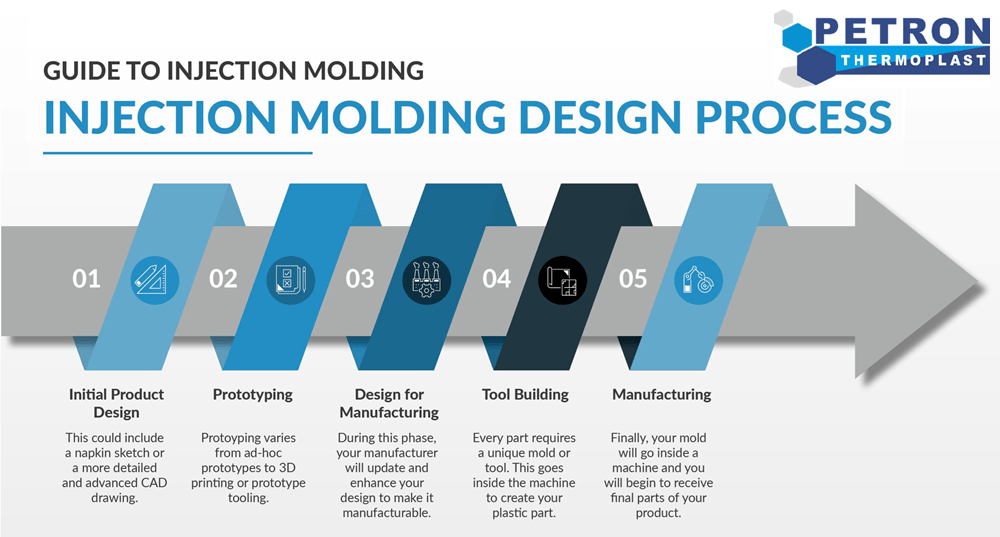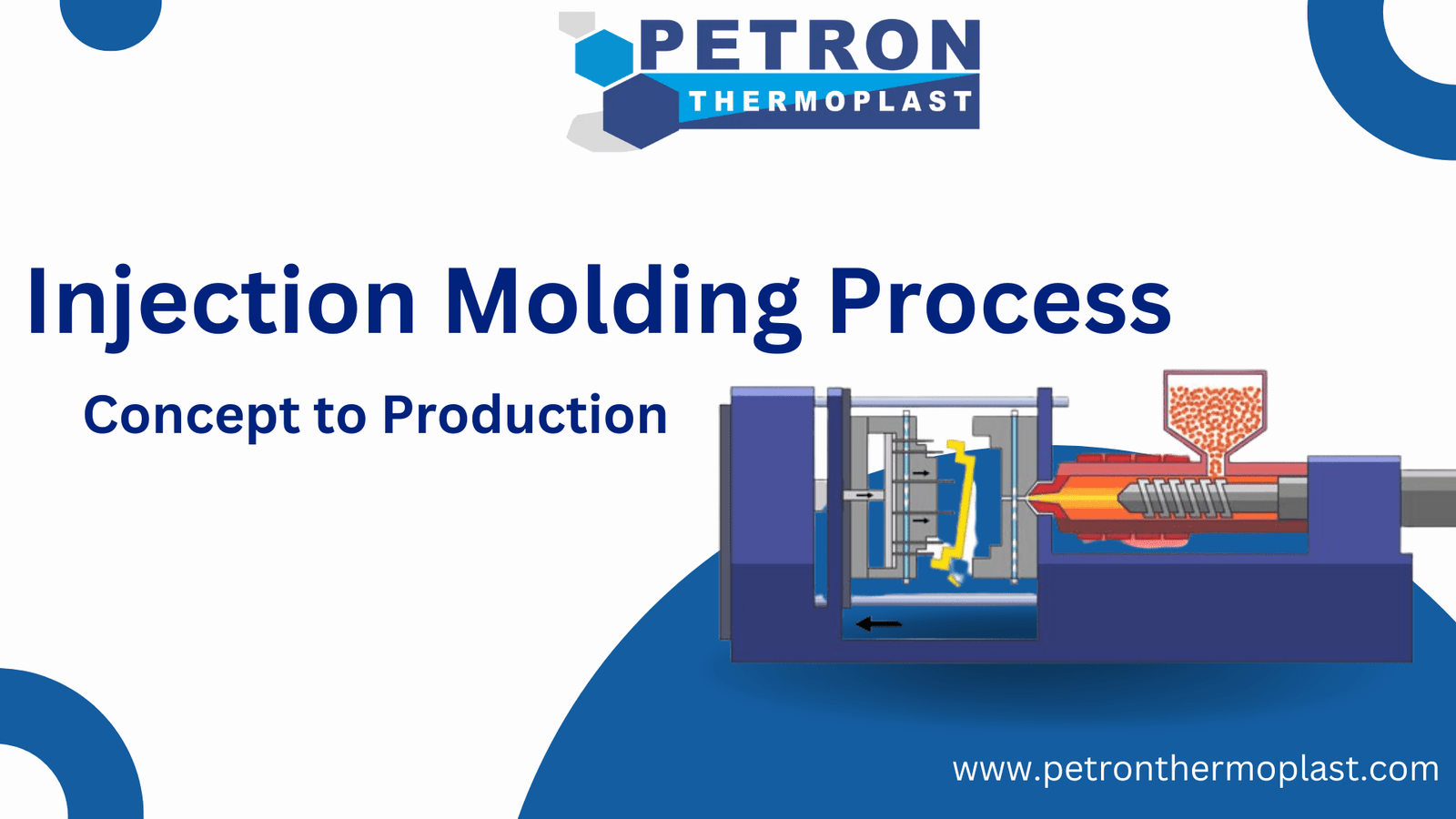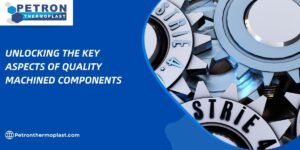Injection molding is the most popular manufacturing process in industries such as the construction industry, engineering, and parts production areas. Simply from injection molding process, manufacturers produce parts from reusable materials like thermoplastic and thermosetting polymers. The reason behind its popularity is its simple process, quality finish, and durability. This process is also suitable for mass production, as it is capable of producing complicated shapes with a high percentage of accuracy. In this blog, we discuss an overview of the injection molding process in detail, from its concept to production.
The history of injection molding:
In 1872, an American inventor duo of brothers named John Wesley Hyatt and Isaac patented the first-ever injection of molding.
What is injection molding?
The injection molding process is recognized as an industrial-based manufacturing process that is ideal for creating the molten or liquid form of material into a specific shape. Injection molding process is widely used for producing different industrial-based parts from plastic, metal, glass, and other materials.
Injection Molding Process
1. Concept and Design of the Injection Module:
- Idea Development: The first step in injection molding is idea development. market needs, advanced technology design Innovation play a huge role in the idea development of a product.
- Design of mold: After the idea development, detailed design of mold is our next step. This step is done by using computer software. When designing the mold, engineers consider factors like the material properties, part geometry, functional requirements, shape, and features of the final product. Then create a 3D design of the mold. Usually, injection molds are made of materials like metal, steel, or aluminum. Molds are designed with two halves. The core and the cavity havels. These two upper and lower parts create the desired shape of the final piece.
- Mold Manufacturing: CNC machining (computerised numeric control), EDM (electric discharge machining), and grinding are the best ways to manufacture the mold.
2. Selection of material:
- Choose the right material: Material selection is the crucial choice in the injection molding process. Materials must be able to maintain a quick flow and the desired shape of the product. While choosing material, must ensure its durability, ease of processing, and stability.
- Examples: Thermoplastics such as polyethylene, polypropylene, nylon, and ABS are the best choices.
3. Injection Molding Process
- Clamping: Clamp both halves, upper and lower, in an injection molding machine.
- Melting: Pour the material into the injection molding machine and let it heat to molten state. Control the temperature and pressure carefully.
- Injected: Inject the molten polymer material into the mold with the help of a screw or nozzle. Fill the space carefully and ensure to avoid defects, air bubbles, or incomplete parts.
- Cooling: After filling the molds, circulate water or cool fluids around the mold and let cool down and solidify the material. This process can be time taking and depends on complicated factors like thickness, material, and mold temperature.
- Ejecting: After the cooling process, open the mold and eject the finished product from the mold.
4. Post processing
- Finishing: However, an ejected product can’t be finalized before trimming and finishing. Trim the excess flash material and apply the additional finishings like painting, plating, and texturing.
- Quality check: After finalizing the finished product, conduct inspection and quality check tests such as visual inspection, functional testing, and measurement.
5. Production and Scaling
- Production Runs: After validating the final product, full scale production will begin. injection molding process is highly demanding for large-volume production, as it helps to produce multiple CNC machining parts in a single cycle.
- Scaling up: Additional molds or machines can be utilized to scale up production with the flow of demand.
6. Packaging and Distribution
- Packaging: Package the final part as per the requirements of the customer, such as branding, which needs custom packaging, and for the sensitive components, protective packaging is ideal.
- Distribution: Distribute the products in demanding markets, customers, and retail or whole seller outlets.

Application of injection molding:
Various industries, like medical devices, packaging, automotive, and consumer electronics, use injection molding in their applications. That includes:
- Automotive parts: Bumpers of cars or vehicles, dashboards, and interior trim process.
- Electronics: Housing devices such as smartphones, computers, and other devices.
- Consumer Goods: Kitchenware, kids toys, and household.
- Medical devices: Surgical devices, syringes, and medical instruments.
Pros and cons:
Benefits of injection molding:
- High efficiency and speed: Ideal for large scale production, as the injection molding process is capable of high-volume production on a large scale with minimal waste and low cost.
- Consistency and quality: An ideal process of producing high quality parts with consistency and expected specifications.
- Material range: Options to choose from a wide range of materials increased the functionality and design flexibility.
- Affordable: Production on a large scale can decrease the per unit cost of molds.
- Complicated geometries: Ideal to create complex shapes easily with this method, while it would be difficult with other manufacturing methods.
- Minimal waste: Recycle and reuse methods of material ensure minimal waste.
Challenges and recommendations:
- Cost: The design and manufacturing costs of molds are very high.
- Limited designs: Additional tooling and modifications are required for complex geometries.
- Selection of material: Selection of materials for the final and desired design, is basically typical sometimes.
Whenever engineers, producers, and manufacturers desire to go through a powerful process that helps in the production of a wide range of products, the injection molding process offers a reliable and efficient solution for them. Products like medical devices, automotive parts, electronics, and consumer goods are easy to produce with this process.
Conclusion
In the world of modern manufacturing, injection molding process adds valuable insights as it is versatile and performs large scale production with complexity and affordability. If you are a manufacturer, try to find a valuable solution to create high quality parts with a satisfactory design. The injection molding process provides valuable insights into morbid demands. It is offering new possibilities for innovation and production according to modern needs and consumer interests.
Follow Us: LinkedIn




